|
PERSONNEL |
|
|
|
notable personnel of the 318th fis |
|
|
|
LIEUTENANT COLONEL Jack M. Butcher |
|
|
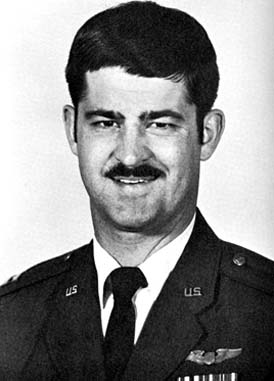 |
|
|
F-106 pilot
Weapons training Officer
Chief of
Standardization & Evaluation
(1978 - 1982) |
|
|
|
|
|
biography |
|
|
|
Lt Col. Jack Butcher was born in 1946 in Berwyn, IL. He was
commissioned a 2d Lt in the U.S. Air Force through the Air
Force ROTC program at the University of Michigan on May 13,
1969, and went on active duty beginning June 14, 1969.
|
|
|
|
Butcher next completed Undergraduate Pilot Training
and was awarded his pilot wings at Webb AFB, TX, in June 1970,
and then completed OV-10 Bronco Combat Crew Training before
deploying to Southeast Asia in February 1971. He served as an
OV-10 pilot with the 20th Tactical Air Support Squadron at DaNang AB, South Vietnam, from February 1971 until he was
forced to eject over Laos and was taken as a Prisoner of War
on March 24, 1971.
|
|
|
|
After spending 736 days in captivity, Capt Butcher was
released during Operation Homecoming on March 28, 1973. During
his time in captivity, he managed to escape twice; once for a
few hours, and a second time for 10 days. He was briefly
hospitalized to recover from his injuries at Wright Patterson
AFB, OH, and then attended F-106 Delta Dart Combat Crew
Training at Tyndall AFB, FL, from December 1973 to July 1974.
|
|
|
|
His next assignment was as an F-106 pilot with the 87th
Fighter Interceptor Squadron at K.I. Sawyer AFB, MI, from July
1974 to February 1975, followed by Pilot Instructor Training
at Randolph AFB, TX, from February to August 1975. Maj Butcher
served as an instructor pilot with the 3389th Flying Training
Squadron at Webb AFB, TX from August 1975 to January 1978, and
then as an F-106 pilot, Weapons Training Officer, and Chief of
Stan/Eval with the 318th Fighter Interceptor Squadron at
McChord AFB, WA, from January 1978 to July 1982.
|
|
|
|
His next assignment was to Air Command and Staff College
at Maxwell AFB, AL, from August 1982 to June 1983, followed by
F-15 Eagle conversion training at Luke AFB, AZ, from June to
September 1983. Lt Col Butcher then served as an F-15 pilot
with the 22nd Tactical Fighter Squadron at Bitburg AB, West
Germany, from September 1983 to February 1986.
|
|
|
|
His final assignment was as Executive Officer to the
Commander of the Northwest Air Defense Sector at McChord AFB,
WA, from February 1986 until his retirement from the Air Force
on July 1, 1989.
|
|
|
|
|
|
prisoner of war / silver star recipient |
|
Information courtesy of the book WE CAME HOME
& the P.O.W. NETWORK |
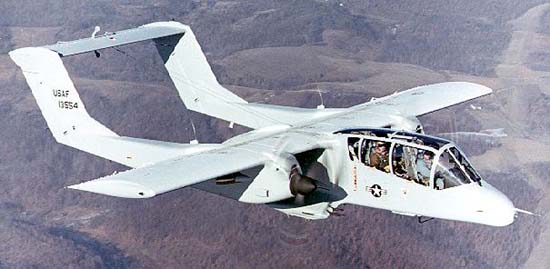 |
|
X |
|
While serving 20th Tactical Air Support Squadron
(TASS) as
a Forward Air Controller (FAC) in the Vietnam War, Butcher was
captured and taken prisoner after his North American OV-10
Bronco (s/n 67‑14693) was destroyed by enemy fire. The then Lieutenant was
held as a as a Prisoner of War (POW) for two years. Butcher would
later receive the Silver Star.
|
|
|
|
|
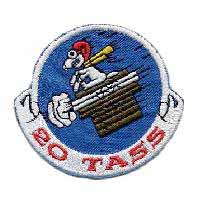 |
|
|
|
|
 |
|
|
|
An OV-10 Bronco is
pictured marking a target for a North American F-100D Super
Sabre during a mission in South Vietnam in 1969. Of the 157
OV-10As delivered to the USAF 64 were lost in the war.
|
|
|
|
On March 24, 1971, Lt Jack Butcher was
shot down in his OV-10 Bronco during a FAC mission in the skies over
Vietnam. Although he ejected from the flaming aircraft, Bucher received
severe shrapnel wounds in both legs. Imprisoned from March 27, 1971 to
March 28, 1973, Butcher expressed that he was "lucky" since he was
captured after the "bad times" (1965 to 1969) where American POWs were
routinely tortured by their captors.
|
|
|
|
Following
the Paris Peace Accords of January 1973, U.S. prisoners of war were
returned during Operation Homecoming during February through April 1973.
During this, 591 POWs were released to U.S. authorities.
(On March 28, 1973 at 12 PM, Lt Bucher and 9
other POWs were released at Gia Lam Airport, Hanoi, North Vietnam, their
C-141, (s/n 67-0007) landed at Clark Air Base, Philippines 3 and one
half hours later ending his 2 years of captivity. Bucher was later
awarded the Silver Star.
|
|
|
|
Below you will find information on Butchers capture in his own
words and a report from the Joint Personnel Recovery Center (JPRC).
|
|
|
|
|
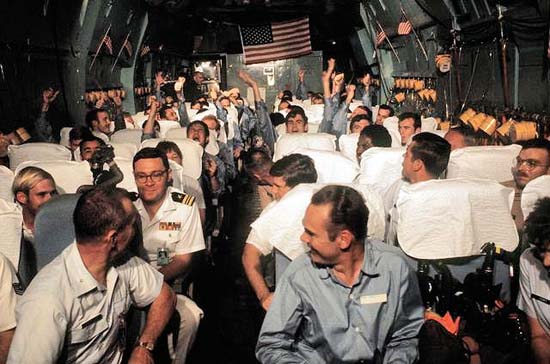 |
|
|
|
POW's celebrate aboard a USAF C-141 after being released from
captivity. |
|
|
|
"American POWs, in serving the way they did,
helped to preserve the freedom in this country necessary to correct its
faults and mistakes."I learned a lot in prison camp. I learned what a
great country this is. It was a daily challenge to stick up for it and
to love it. And that love grows and grows." - -
Capt Jack Butcher (1977)
|
|
|
|
|
|
Lt Col. Jack Butcher - his
own words |
|
|
|
On my eleventh combat mission over Laos on 24 March 1971, I was
shot down. I was injured in the explosion of the aircraft but managed to
eject. Very soon after landing on the ground I was captured and was
detained in a small camp in Laos for six weeks.
|
|
|
|
While in this camp I managed to escape once, but was re-captured
after only a few hours. While in this camp, I also received medical
attention and regained my health for the trip by foot to Hanoi.
|
|
|
|
During the trip to Hanoi, I escaped again. This time I evaded for
ten days. I survived by eating some fruit, ants and grasshoppers. I
attempted to make signals in an effort to be rescued. However, on the
tenth day, I accidentally ran into the enemy and was re-captured again.
After some rest, I was again moved toward Hanoi.
|
|
|
|
During the first week of June 1971 I arrived in Hanoi and was
joined with a small group of men captured in Laos and remained with them
in Hanoi until 28 March 1973 when we were released. Three days later I
was reunited with my wife, Dawn, at Wright Patterson AFB."
|
|
|
|
Lt Col Butcher's Silver Star
certificate
reads:
During the Period 1 April 1971 to 10 April 1971: This officer
distinguished himself by gallantry and intrepidity in action in
connection with military operations against an opposing armed force
while serving as a Prisoner of War in Southeast Asia. With profound
courage and a strong conviction to the Code of Conduct, he escaped from
an enemy prisoner of war camp, knowing that the odds for success were
slight and that if recaptured he would receive torture and long periods
in solitary confinement. The success of his escape was short lived, and
he was recaptured and punished. Captain Butcher's heroic actions reflect
great credit upon himself and the United States Air Force.
|
|
|
|
|
 |
|
Military Assistance Command, Vietnam –
Studies and Observations Group |
|
|
|
Bright Light |
|
From "The Rescue of BAT-21",
Chapter 9 pgs. 83, 84 & 85, Darrel D. Whitcomb, Naval Institute Press,
1998
|
|
|
|
On 24 March 1971, 1st Lt. Jack Butcher of the 20th TASS, call
sign Covey 231, took off in an OV-10 from Da Nang. While searching for
trucks along the Ho Chi Minh Trail, he was shot down by a 37 mm
antiaircraft gun. Wounded in the ejection, he was treated by a North
Vietnamese medical team in preparation for movement to North Vietnam.
When he was strong enough, two guards were assigned to begin taking him
north. Butcher watched the guards closely. A week later he saw an
opportunity and escaped. All he had was the hat, pajamas, and tennis
shoes he was wearing.
|
|
|
|
A few days later the JPRC (Joint Personnel Recovery Center)
received intelligence that First Lieutenant Butcher had escaped and was
loose near Tchepone in central Laos. They immediately ordered photo and
visual reconnaissance of the area. Butcher tried to move away from
people, but the trail area was heavily populated. Moving to higher
ground, he found a machete and a canteen. He used the blade to cut
enough bushes to fashion a large letter N, which was the correct
escape-and-evasion code letter for the previous month.
|
|
|
|
But it took a few days for the bushes to discolor enough to be
noticed. After a three-day wait, Butcher was weak from lack of food and
water. He realized that he had to move. So he left a message with his
service number and an arrow to indicate the direction that he was going,
and he set off. He was still near Tchepone in central Laos.
|
|
|
|
Nearing a village, he found a pineapple grove and took five. He
ate three immediately and put the other two into a backpack that he had
made. Then he attempted to follow a trail to the west. Unfortunately he
stumbled into a camouflaged village and was recaptured. On that same
day, in an open area on the side of a hill, JPRC spotted the
escape-and-evasion code letter. An escape-and-evasion kit was dropped on
the site by aircraft but was not picked up. Two Bright Light teams were
inserted but could not make contact. Enemy forces quickly detected their
presence and began to pursue and attack them, and the teams had to be
extracted under heavy fire. Air search was resumed and confirmed that
First Lieutenant Butcher had been recaptured. He was eventually moved to
Hanoi and released two years later.
|
|
|
|
The near miss with Butcher was indicative of the frustrations
felt by the JPRC troops. Overall during the war, the results of JPRC
were a mixed bag. The leaflet drops, reward programs, and intelligence
and team operations led to the recovery of 492 Vietnamese prisoners and
101 U.S. remains. But through March 1972, despite the best of efforts,
JPRC had not successfully recovered any live Americans. There had not
yet been a fully successful Bright Light operation.
|
|
|
|
|
|
the vista oaks Apartments crash |
|
|
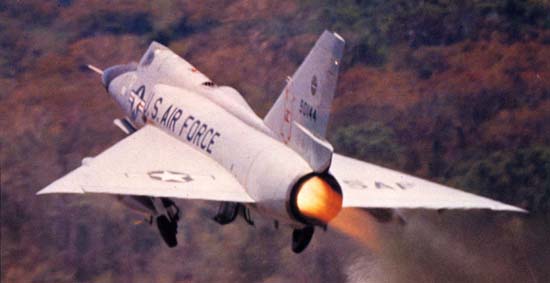 |
|
On May 29, 1978 Butcher and his wingman, Capt Bruce Miller
took off from McChord on a routine flight to Tyndall AFB when
the F-106 piloted by Capt Miller (s/n 59-0144) suffered engine
failure due to incorrectly installed main engine bearing. Visit
the "Vista
Oaks Apartments Crash" page under the Miscellaneous
Information tab.
|
|
|
|
|
 |